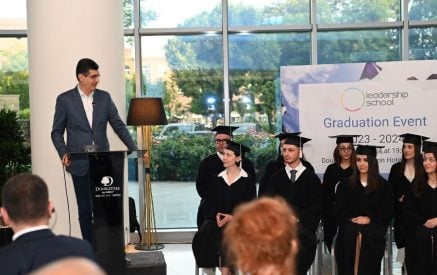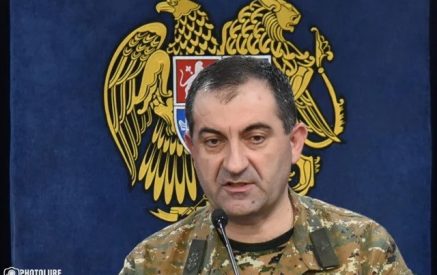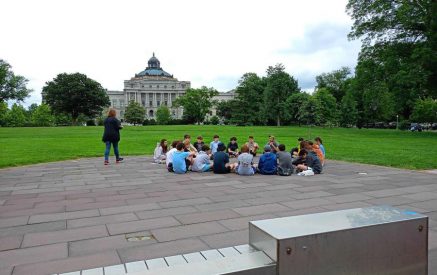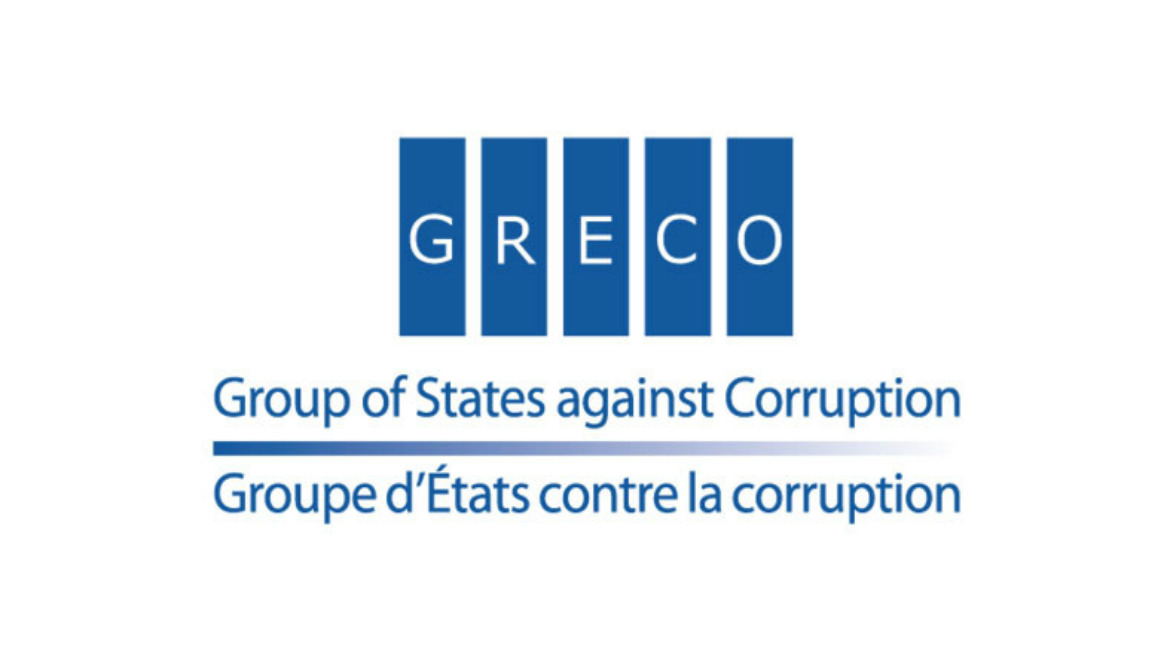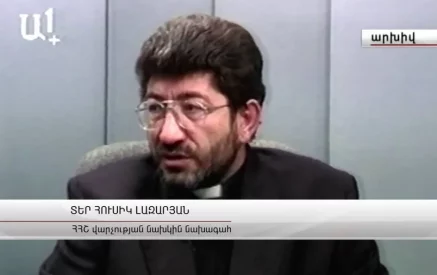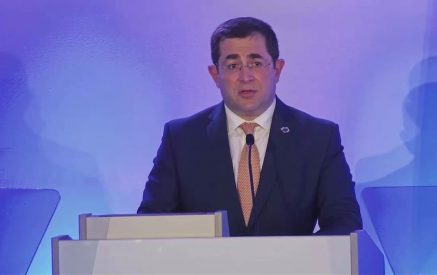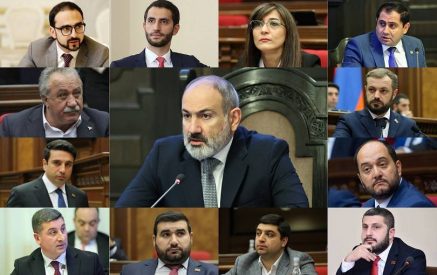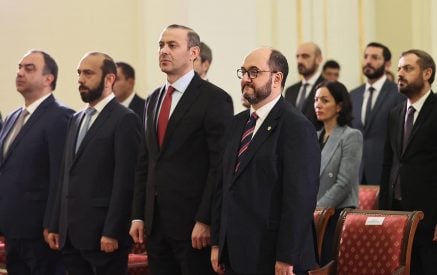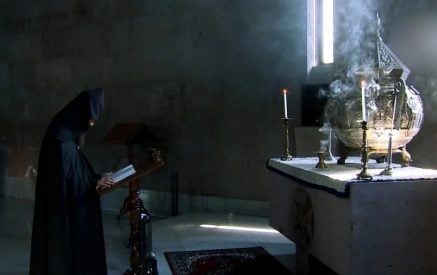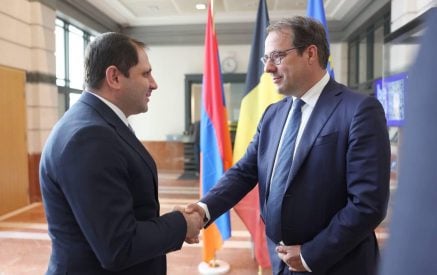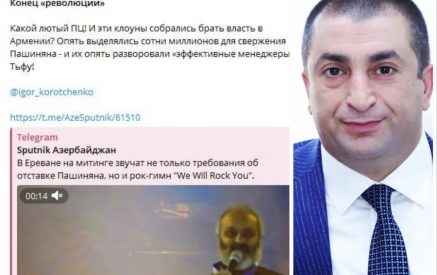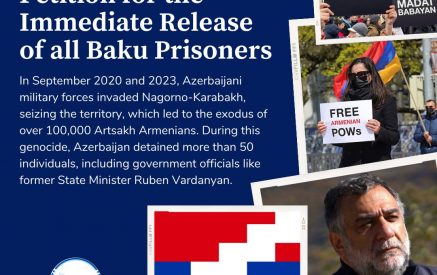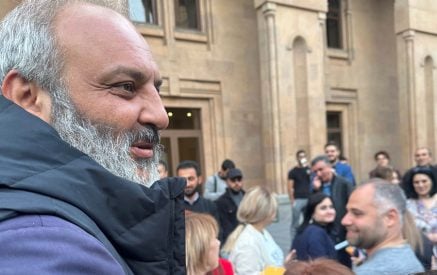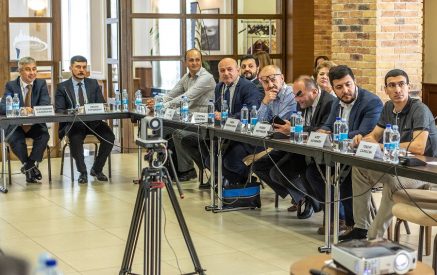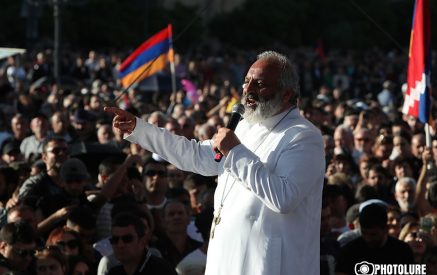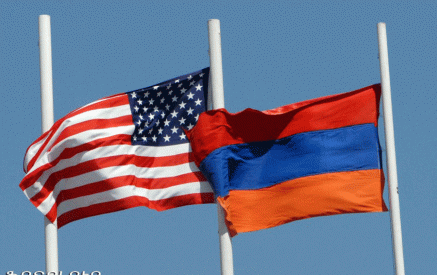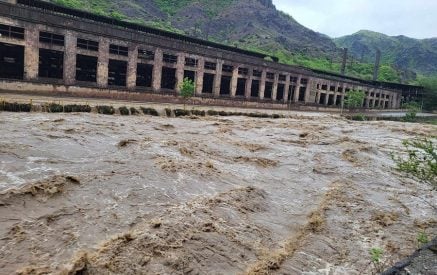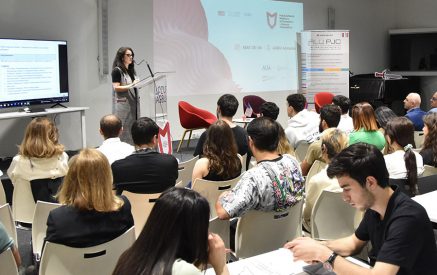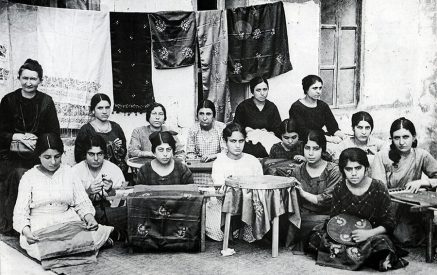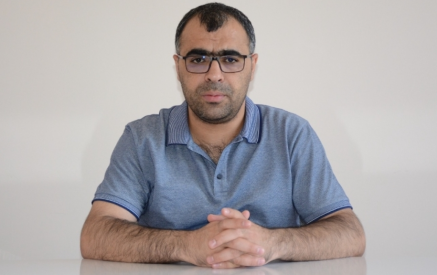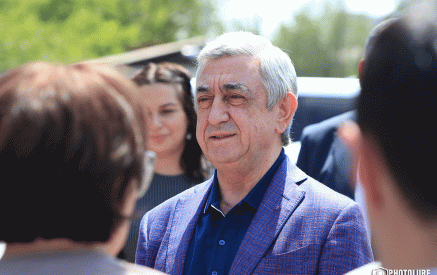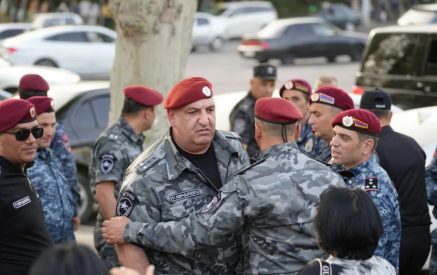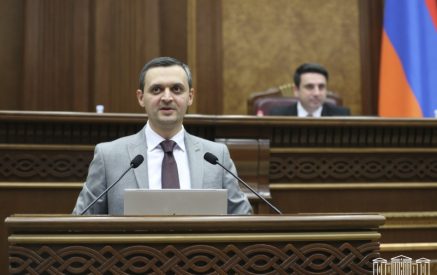In response to a request for an advisory opinion made by the Constitutional Court of Armenia, the
Court delivered, unanimously, the following opinion:
The Court, delivering its second advisory opinion after Protocol 16 to the European Convention on
Human Rights came into force in 2018, held that it could not answer the first two questions put by
the Armenian Constitutional Court.
In particular, it could not find any direct link between the questions and the ongoing domestic
proceedings, which have been brought against former President Robert Kocharyan for allegedly
attempting to overthrow the constitutional order in 2008.
The Constitutional Court’s third question was whether a provision which defined a crime and
referred to a legal act with supreme legal force and a higher level of abstraction could meet the
Convention requirements of certainty, accessibility, foreseeability and stability.
Read also
The Court found that such a provision, using the “blanket reference” or “legislation by reference”
technique in criminalising acts or omissions, The referencing provision and the referenced provision,
read together, had to enable individuals to foresee, if need be with the help of legal advice, what
conduct would make them criminally liable. Among other things, the most effective way of ensuring
clarity and foreseeability was for the reference to be explicit and for the referencing provision to set
out the constituent elements of the offence.
The Constitutional Court’s fourth question concerned the criteria under Article 7 (no punishment
without law) of the European Convention for comparing two different versions of a legal act for their
compatibility with the principle of the non-retroactivity of criminal law. The Court found that such
assessments had to take account of the specific circumstances of the case (the principle of
concretisation) rather than be carried out in the abstract.
The background to the case and the domestic proceedings
Former President Robert Kocharyan, who held that post from 1998 to 2008, and several other
individuals were charged in July 2018 under Article 300.1 § 1 (Overthrowing the constitutional order)
of the 2009 Criminal Code.
The charges related to events in early 2008: protests had begun in February of that year after a
presidential election, won by Prime Minister Serzh Sargsyan, which the demonstrators considered
had not been free and fair.
The protests, which had involved thousands of people, were ultimately dispersed by the police, with
the armed forces also involved, on 1 and 2 March 2008. Ten people died (eight civilians and two lawenforcement officers) and Mr Kocharyan declared a state of emergency, which restricted a number of rights for 20 days.
In May 2019 the court dealing with the case against Mr Kocharyan, the First-Instance Court of
General Jurisdiction of Yerevan, suspended proceedings and asked the Constitutional Court to
determine whether Article 300.1 of the 2009 Code was compatible with the Constitution.
In particular, it asked whether that provision met the requirement of legal certainty, the principle of
the non-retroactivity of criminal law, and whether it worsened the legal situation of a person in comparison to Article 300 (Usurpation of State power) of the former Criminal Code, which had been in force at the time of the events in question.
Mr Kocharyan lodged two applications with the Constitutional Court, asking similar questions. He
also highlighted essential differences between the two provisions.
Procedure and composition of the Court
A request from the Constitutional Court of Armenia for an advisory opinion was introduced on
2 September 2019 and on 2 October it was accepted by the Panel of the Grand Chamber. A Grand
Chamber was formed on 7 October in accordance with Rule 24 § 2 (h) of the Rules of Court.
The Court received written observations from the Armenian National Assembly, Mr Kocharyan, the
Armenian Government, the Helsinki Association for Human Rights, and by Mr Yegoryan on behalf of
the family members of the victims of the events of 1-2 March 2008.
The opinion was delivered by the Grand Chamber of 17 judges, composed as follows:
Linos-Alexandre Sicilianos (Greece), President
Robert Spano (Iceland),
Jon Fridrik Kjølbro (Denmark),
Ksenija Turković (Croatia),
Paul Lemmens (Belgium),
Síofra O’Leary y (Ireland),
Ganna Yudkivska (Ukraine),
André Potocki (France),
Egidijus Kūris (Lithuania),
Iulia Antoanella Motoc (Romania),
Georges Ravarani (Luxembourg),
Pauliine Koskelo (Finland),
Marko Bošnjak (Slovenia),
Jovan Ilievski (North Macedonia),
Jolien Schukking (the Netherlands),
Gilberto Felici (San Marino), judges
Arman Sarvarian (Armenia), ad hoc judge
and also Søren Prebensen, Deputy Grand Chamber Registrar,
The questions asked
The questions asked by the Constitutional Court were worded as follows:
“1) Does the concept of ‘law’ under Article 7 of the Convention and referred to in other Articles of
the Convention, for instance, in Articles 8-11, have the same degree of qualitative requirements
(certainty, accessibility, foreseeability and stability)?
2) If not, what are the standards of delineation?
3) Does the criminal law that defines a crime and contains a reference to certain legal provisions of
a legal act with supreme legal force and higher level of abstraction meet the requirements of
certainty, accessibility, foreseeability and stability?
4) In the light of the principle of non-retroactivity of criminal law (Article 7 § 1 of the Convention),
what standards are established for comparing the criminal law in force at the time of committal of
the crime and the amended criminal law, in order to identify their contextual (essential) similarities
or differences?”
The Court’s opinion
Preliminary considerations
The Court reiterated that advisory opinions had to be “confined to points that are directly connected
to the proceedings pending at domestic level”. The Court also had the power to reformulate
questions, as it had done in the first advisory opinion, and it considered that it could combine
questions. Moreover, it would not answer questions which did not fulfil the criteria of Protocol 16.
The intention of the advisory opinion was to enable the Constitutional Court of Armenia to resolve
the issue of whether Article 300.1 of the 2009 Criminal Code was constitutional, in the light of the
requirements of Article 7 of the Convention. The First-Instance Court then had to apply the answer
given by the Constitutional Court to the facts of the case against Mr Kocharyan.
The first and second questions
The Court could not see any direct link between the first two questions and the proceedings against
Mr Kocharyan: there was nothing which could be perceived as the exercise of his rights under
Articles 8 to 11 of the Convention, and it was difficult to see which questions related to the legal
context which the Constitutional Court wished to decide with the help of the Court’s opinion.
Any answers to the first and second questions would be of an abstract and general nature and
beyond the scope of an advisory opinion. Nor did it appear possible to reformulate the questions to
allow the Court to confine itself to points that were directly connected to the domestic proceedings.
The Court thus considered that it could not answer the first and second questions as they did not
fulfil the requirements of Article 1 of Protocol No. 16 and could not be reformulated so as to enable
the Court to discharge its advisory function effectively and in accordance with its purpose.
The third question
This question referred to the fact that Mr Kocharyan had been accused of an offence which was
defined by the use of the technique of “blanket reference” or “legislation by reference”. Specifically,
Article 300.1 made reference to Articles 1 to 5 and 6 § 1 of the Armenian Constitution.
According to the Constitutional Court, the referenced legal provisions had supreme legal force in the
hierarchy of legal norms and were formulated with a higher level of abstraction than the Criminal
Code. In substance, the Constitutional Court was asking whether that situation was compatible with
Article 7 of the Convention, and above all with the requirements of clarity and foreseeability.
The Court reiterated its case-law on legal certainty and foreseeability and referred to cases which
had involved criminal law provisions setting out the constituent elements of an offence by referring
to provisions or principles of constitutional law or to other areas of law.
It found that its case-law indicated that the use of the “blanket reference” or “legislation by
reference” technique in criminal law was not in itself incompatible with Article 7. While it had not
made an explicit statement to that effect, it had implicitly accepted the use of such techniques and
had determined whether the criminal law at issue was sufficiently precise and foreseeable.
Furthermore, a comparative-law survey carried out for the advisory opinion suggested that many
Council of Europe States used such a technique for defining criminal offences against the
constitutional order.
The Court concluded that using the “blanket reference” or “legislation by reference” technique in
criminalising acts or omissions was not in itself incompatible with Article 7.
The two provisions – the referencing provision and the referenced provision – read together, had to
enable individuals to foresee, if need be with the help of legal advice, what conduct would make
them criminally liable. This applied equally to situations where the referenced provision had a higher
hierarchical rank in the legal order or a higher level of abstraction than the referencing provision.
The most effective way of ensuring clarity and foreseeability was for the reference to be explicit, and
for the referencing provision to set out the elements of the offence, while the referenced provisions
could not extend the scope of criminalisation in the referencing provision. The court applying the
provisions had to assess if criminal liability was foreseeable in the circumstances of the case.
Fourth question
Mr Kocharyan had been charged under an Article of the Criminal Code which had only come into
effect after the events in question, when another Article had been in force.
The Constitutional Court had submitted that the two Articles differed significantly and had asked, in
relation to changes in the definition of the offence of overthrowing the constitutional order, what
standards applied under Article 7 for comparing the law in force at the time of the commission of
the offence and the amended criminal law.
The Court observed that its comparative-law study had shown that many Member States, when
assessing the principle of the non-retroactivity of criminal law, used the principle of “concretisation”,
that is, of looking at the particular circumstances of a case to assess whether a new law was more or
less favourable to an accused than one in force at the time of an alleged crime. That principle was
also strongly reflected in the Court’s case-law.
The Court reiterated that Article 7 unconditionally prohibited the retrospective application of the
criminal law to an accused’s disadvantage, while its case-law laid down the principle of the
retrospective application of the more lenient criminal law.
The Court referred to several cases which had either concerned the reclassification of charges under
an amended version of a Criminal Code (G. v. France, Ould Dah v. France, Berardi and Mularoni v.
San Marino, and Rohlena v. the Czech Republic), or the principle of the non-retroactivity of penalties
(Maktouf and Damjanović v. Bosnia and Herzegovina). In both instances, the Court had looked at the
specific circumstances of the case. In contrast, it was not concerned with the formal classifications or
names given to criminal offences under domestic law.
The Court was of the view that the question of whether the application of Article 300.1 of the 2009
Criminal Code in Mr Kocharyan’s case would violate the principle of non-retroactivity contained in
Article 7 of the Convention could not be answered in abstract terms (in abstracto).
Instead, Article 7 required an assessment in concreto, on the basis of the specific circumstances of
the case. The domestic courts had to compare the legal effects of the application of either of the two
Articles, examining the accused’s alleged actions or omissions and other specific circumstances.
In particular, the courts had to establish whether all the constitutive elements of the offence and
other conditions for criminality had been fulfilled under the Criminal Code provisions in force at the
time of the events. If not, Article 300.1 of the 2009 Code could not be considered more lenient and
could not be applied. Nor could the new provision be applied if the courts established that it would
attract more serious consequences for the accused than the previous Article 300.
Domestic courts thus had to have regard to the specific circumstances of a case (the principle of
concretisation) to establish whether, for the purposes of Article 7, a law passed after an offence had
allegedly been committed was more or less favourable to the accused than the law in force at the
time of the offence. If the subsequent law was more severe, it could not be applied.
Separate opinions
Ad hoc Judge Sarvarian expressed a concurring opinion, which is annexed to the advisory opinion.
The European Court of Human Rights





